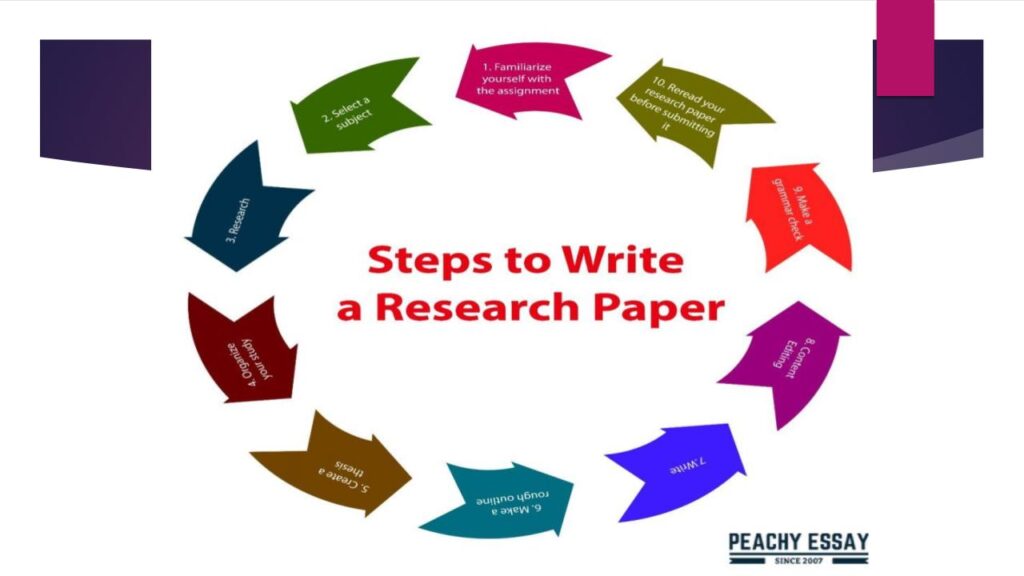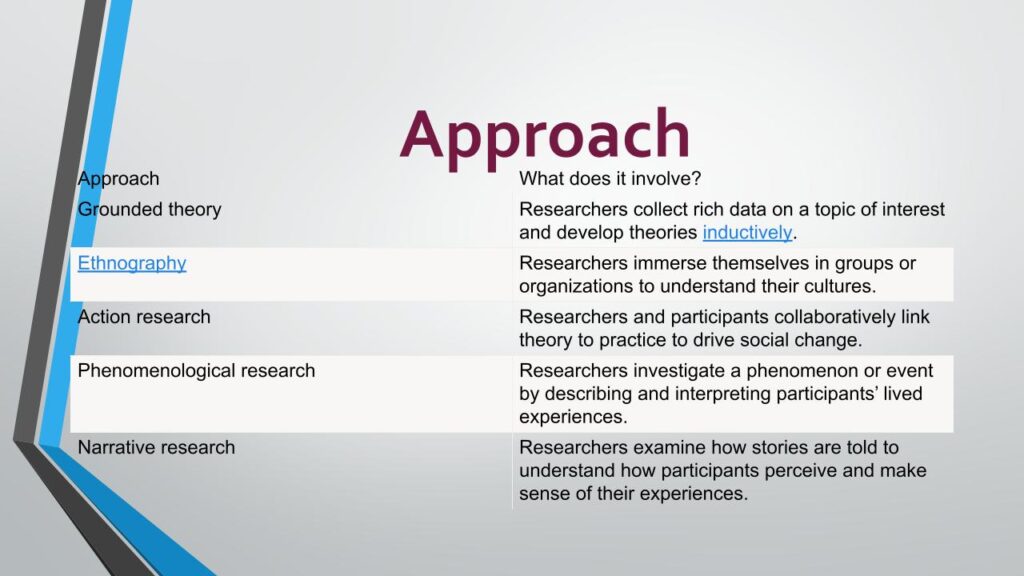Research Paper

Steps
- ABSTRACT
- JUSTIFICATION
- RESEARCH OBJECTIVES
-LITERATURE REVIEW
- METHODOLOGY
QUANTITATIVE
QUALITATIVE
-RESULT AND DISCUSSIONS
-CONCLUSION
-REFERENCES
-ANEXES
Abstract
The function of an abstract is to describe, not to evaluate or defend, the paper.
The abstract should begin with a brief but precise statement of the problem or issue, followed by a description of the research method and design, the major findings, and the conclusions reached.
Why is abstract important in research?
Summarization, description, sorting, and indexing. Abstracts are designed to highlight key points from major sections of the paper and to explain what the paper includes.
How do you write a research abstract?
- Usually an abstract includes the following.
- A brief introduction to the topic that you’re investigating.
- Explanation of why the topic is important in your field/s.
- Statement about what the gap is in the research.
- Your research question/s / aim/s.
- An indication of your research methods and approach.
- Your key message.
- A summary of your key findings.
- An explanation of why your findings and key message contribute to the field/s.
ABSTRACT EXAMPLE
Example: Humanities thesis abstractThis paper examines the role of silent movies as a mode of shared experience in the US during the early twentieth century. At this time, high immigration rates resulted in a significant percentage of non-English-speaking citizens. These immigrants faced numerous economic and social obstacles, including exclusion from public entertainment and modes of discourse (newspapers, theater, radio).
Incorporating evidence from reviews, personal correspondence, and diaries, this study demonstrates that silent films were an affordable and inclusive source of entertainment. It argues for the accessible economic and representational nature of early cinema. These concerns are particularly evident in the low price of admission and in the democratic nature of the actors’ exaggerated gestures, which allowed the plots and action to be easily grasped by a diverse audience despite language barriers.
Keywords: silent movies, immigration, public discourse, entertainment, early cinema, language barriers.
Justification
What is Justification?
Research justification refers to the rationale for the research, or the reason why the research is being conducted, including an explanation for the design and methods employed in the research.
What is the full meaning of justification?
- the act or an instance of proving to be just, right, or reasonable.
- sufficient reason to show that an action is correct or acceptable.
How do you write a justification for a research paper?
- provide references;
- refer to a policy, press report, or other reputable information source;
- provide a detailed outline of a context, condition, concern, conundrum or situation;
- provide an anecdote or evidence from personal experience.
Why is justification important in research?
The purpose of the Justification is to aid reviewers when assessing proposals so that they can make an informed judgement on whether the resources requested are appropriate for the research posed.
What makes a good justification?
Justification requires Coherence with previous data and Clarity with regard to language and logic.
There can be no Contradiction or strong Counter evidence. TRUE: The knowledge claim is True rather
than False.
Literature Review
WHAT IS A LITERATURE REVIEW IN RESEARCH?
A literature review is a piece of academic writing demonstrating knowledge and understanding of the academic literature on a specific topic placed in context. A literature review also includes a critical evaluation of the material; this is why it is called a literature review rather than a literature report.
HOW DO YOU WRITE A LITERATURE REVIEW?
- Step 1: Define your research scope. What is the specific research question that your
literature review helps to define? … - Step 2: Identify the literature. Start by searching broadly. …
- Step 3: Critically analyze the literature. …
- Step 4: Categorize your resources.
The purpose of a literature review is to collect relevant, timely research on your chosen topic, and synthesize it into a cohesive summary of existing knowledge in the field. This then prepares you for making your own argument on that topic, or for conducting your own original research.
WHAT ARE THE 5 IMPORTANCE OF LITERATURE REVIEW?
- Provide foundation of knowledge on topic.
- Identify areas of prior scholarship to prevent duplication and give credit to other researchers.
- Identify inconstancies: gaps in research, conflicts in previous studies, open questions left from other research.
- Identify need for additional research
- Justifying your research
Methodology
Research conducted for the purpose of contributing towards science by the systematic collection, interpretation and evaluation of data and that, too, in a planned manner is called scientific research: a researcher is the one who conducts this research.
There are two main categories of research methods: qualitative research methods and quantitative research methods.
Qualitative Method
Qualitative research involves collecting and analyzing non-numerical data (e.g., text, video, or audio) to understand concepts, opinions, or experiences. It can be used to gather in-depth insights into a problem or generate new ideas for research.
Qualitative research is the opposite of quantitative research, which involves collecting and analyzing numerical data for statistical analysis.
Qualitative research is commonly used in the humanities and social sciences, in subjects such as anthropology, sociology, education, health sciences, history, etc.
Approaches to qualitative research
Qualitative research is used to understand how people experience the world. While there are many approaches to qualitative research, they tend to be flexible and focus on retaining rich meaning when
interpreting data.
Common approaches include grounded theory, ethnography, action research, phenomenological research, and narrative research. They share some similarities, but emphasize different aims and
perspectives

Qualitative research methods
Each of the research approaches involve using one or more data collection methods. These are some of the most common qualitative methods:
- Observations: recording what you have seen, heard, or encountered in detailed field notes.
- Interviews: personally asking people questions in one-on-one conversations.
- Focus groups: asking questions and generating discussion among a group of people.
- Surveys: distributing questionnaires with open-ended questions.
- Secondary research: collecting existing data in the form of texts, images, audio or video
recordings, etc.
Frequently asked questions about qualitative research
- What’s the difference between quantitative and qualitative methods?
- What are the main qualitative research approaches?
- What is data collection?
- How do you analyze qualitative data?
What’s the difference between quantitative and qualitative methods?
Quantitative research deals with numbers and statistics, while qualitative research deals with words and meanings.
Quantitative methods allow you to systematically measure variables and test hypotheses. Qualitative methods allow you to explore concepts and experiences in more detail.
Data Collection
Is the systematic process by which observations or measurements are gathered in research. It is used in many different contexts by academics, governments, businesses, and other organizations.
How do you analyze qualitative data?
There are various approaches to qualitative data analysis, but they all share five steps in common:
- Prepare and organize your data.
- Review and explore your data.
- Develop a data coding system.
- Assign codes to the data.
- Identify recurring themes.
The specifics of each step depend on the focus of the analysis. Some common approaches
include textual analysis, thematic analysis, and discourse analysis.
